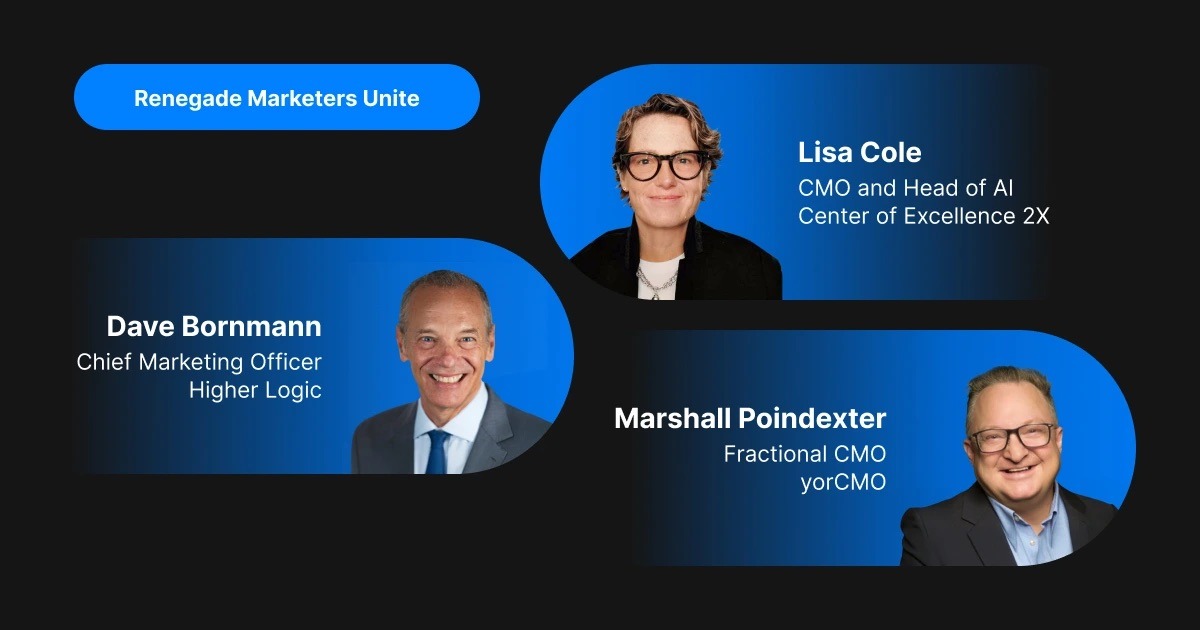May 11, 2020 | Blog
5 fundamental components of an ABM strategy to drive revenue impact

With the B2B sales cycles averaging 12-18 months, it is not surprising that marketing leaders are being asked to do more to keep opportunities warm. Pushing an opportunity over the finish line takes considerable effort and resources from both marketing and sales teams—and the larger the deal, the more is needed to support it.
Because resources are limited, marketing needs to prioritize accounts and opportunities that have the highest chance of closing. For that, leading organizations utilize account-based marketing (ABM).
ABM is regarded by many as the better way to support large, strategic deals. Executed well, ABM strategy can accelerate sales cycles, provide better qualified-lead conversion, and improve long-term revenue growth.
However, the deployment of an ABM strategy comes with its own set of challenges. To be able to execute confidently, there are many things about ABM to know, from messaging to new tools and processes—and even how much you should invest in it.
But there is one key element that most B2B marketers overlook in their quest for a successful ABM program: a foundation rooted in a strong demand generation program.
The Real Difference Between Demand Generation and ABM Strategy
The difference between demand gen and ABM isn’t so much in the tactics or channels, but the larger strategic intent of your company.
With classic demand gen efforts, marketers aim to generate interest from any contact as long as they fit the criteria of the buyer profile (i.e., the right industry, revenue size, level, or seniority role).
But ABM is focused on accounts with high strategic importance due to the potential of significantly larger deal sizes or volume. For example, if you are in the retail or supply chain business, you would want to win a logo like Walmart or Amazon. Likewise, in any industry or segment, there will be similar strategic accounts that companies want to target and get in front of.
In our view, ABM shouldn’t be a separate program from demand generation; rather, it should be the evolution of your demand gen program. Think of it this way: your demand gen programs have the objective of converting the unengaged to engaged, while ABM programs have the purpose of converting the engaged to an opportunity. So, a single revenue impact engine that starts off as a demand generation program can evolve into a more specific and personalized ABM engine as you engage and learn more about your target audience.
To achieve maximum impact, marketing leaders should take a measured approach and add different tactics into the marketing mix, including enabling technology such as an ABM platform, turning on the right lead channels, and evolving the messaging as they go along.
But where do most marketers go wrong with their ABM strategies? How can they ensure a seamless transition from demand gen to ABM?
In this blog, we’ll describe the five key fundamental components of an effective ABM program and address the common mistakes marketers make for each one.
Five Key Components of an Effective ABM Program
1. Gain a deep understanding of your database
The foundation of any demand gen program is a quality database and targeted messaging towards the prospects’ pain points. What marketers often neglect is having a structured and purposeful approach to discover and test what messaging resonates better with the database and why.
Some have a view that their messaging storyline is static and stays static throughout the demand gen program—but the opposite is true. In fact, as you successfully convert your database, you need to evolve the messaging as prospects move deeper into the funnel by addressing specific pain points of an industry, vertical, or persona.
In order to do this effectively, increase contact discovery to build a more comprehensive understanding of the account’s organizational structure. This includes mapping out reporting levels, uncovering influencers, and understanding the relationship between the buyer and the champion within the account.
Having an agile framework for messaging and topical tests allows you to learn more about the interests and needs of your contact databases early on and helps build a meaningful messaging storyline.
2. Focus on targeted clusters
Once you know your database, focus on targeting smaller clusters. For perspective, our best practice for building a database is to narrow your target list down to about 200 accounts and 2,000 contacts.
A more focused approach would allow account-based research to go deeper and uncover buying triggers, pain points, and priorities. For example, this research can get into the technographics of the accounts to understand the baseline technology that companies have, and even map that to adjacent products or services that are relevant for a prospect’s next purchase.
To select which accounts to pick, you can also analyze intent signals sourced from different platforms such as Bombora and DiscoverOrg, which help pinpoint accounts that exhibit strong propensity to buy. This granular and highly personalized approach has a higher degree of success in capturing the attention of the right buyer at the right time.
3. Leverage account scoring and analytics
Access to good data is critical to the success of any ABM strategy. If a prospect needs to be touched 7-12 times to achieve brand awareness, having the ability to track and differentiate interactions adds richness to your understanding of the quality and readiness of leads for the next level of engagement.
Interactions can mean a broad range of activities like opens, clicks, form fills, chatbot conversations, and contact us requests. Therefore, developing a weighted scoring model for leads that prioritizes accounts and different interaction signals will help inform inside sales and telemarketing efforts. For example, you should weigh chatbot interaction more than an eBook download in an email campaign, and a demo request as more valuable than a chatbot interaction. And engagement recency, which refers to how a recipient’s engagement changes over time, is a key factor in a weighted lead scoring model.
What is most valuable is the ability to quickly visualize and evaluate account scoring details with ease, leading to customized follow-up plans based on the displayed interest and activity. It is also important to continue to collect and analyze the engagement data and not be afraid to change the rules of the scoring model as new insights emerge.
4. Run guerilla sales campaigns to maximize impact
In line with the idea of keeping your ABM program agile, don’t focus on executing by a rigid playbook, but strike while the iron is hot. Within your ABM nurture program, you may see a pattern of engagement with consistent and sustained open and click rates across your campaigns.
A stable reception across the database is an interesting data point because it may signal a higher level of readiness for a sales conversation. Cross-referencing this with intent data provides increased affirmation of that readiness and indicates whether it would a good time to run a “guerilla” sales campaign.
The outreach tone of a guerilla sales campaign is much more sales-centric and direct in asking prospects for a meeting or call, and we have seen success with simple, black-and-white emails and LinkedIn InMails.
A guerilla sales campaign executed within a nurture stream helps to accelerate prospects that exhibit higher engagement signals deeper into the funnel. Since these campaigns are infrequent, it does not disrupt existing nurture streams too much, while having the added benefit of getting prospects who are more ready to buy to raise their hands. The key point to remember is that guerilla sales campaigns are done based on engagement patterns and sales insights and are not a random tactic that follows a pre-defined calendar.
5. Turn on the right lead channels
After you have successfully made first contact with your target audience, it is time to increase the number of touchpoints by turning on more lead channels. The aim is to improve account penetration by getting more brand recognition and engagement across key stakeholders and influencers within those accounts.
Because you are balancing budget constraints, it makes sense to focus more on accelerating the targets that have already engaged rather than cold contacts. However, resource constraints are not only limited to the demand gen program side, but also for inside sales and telemarketing, which are tasked to convert those targets into meetings and opportunities.
Therefore, investing in channels that provide impressions rather than clicks would be the ideal tactic for follow-up waves to the initial few touchpoints. Tactics like audience-based advertising, remarketing, and broad or long-tail search campaigns would work well, while simultaneously preserving budget.
The 2X Approach to ABM Strategy
We know the challenges of deploying an ABM program, which can be difficult, expensive, and risky when your resources are already strained. Marketers may even end up executing tactics without a solid focus on increasing program efficiency or the revenue impact of their marketing engine.
As a marketing-as-a-service (MaaS) firm, 2X has the experience and expertise to help marketing leaders implement and execute ABM.
Our UnifyABM is a solution that implements ABM best practices, applying data at every stage of the program to increase efficiency, reduce costs, and ensure there are no missteps along the way.
Contact us to learn more about how UnifyABM and marketing as a service can help with your ABM program.



